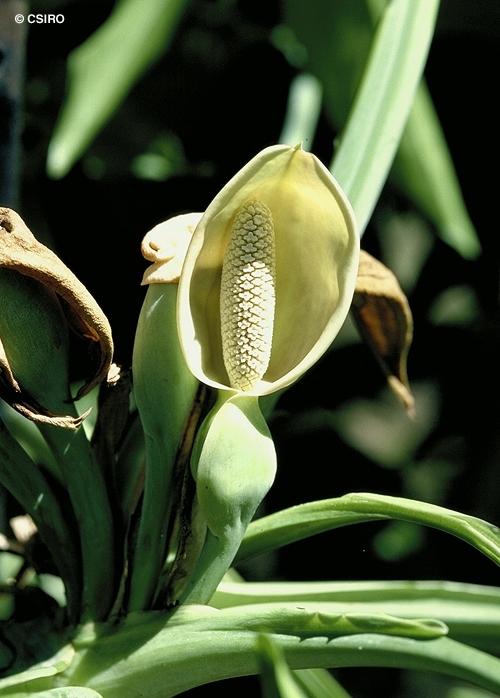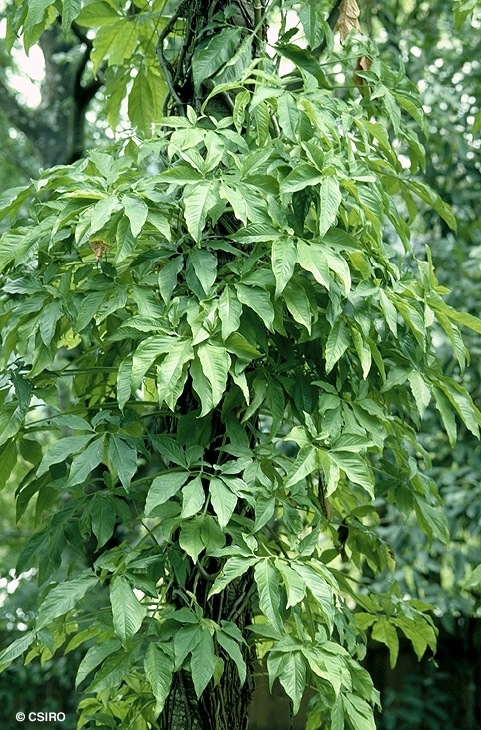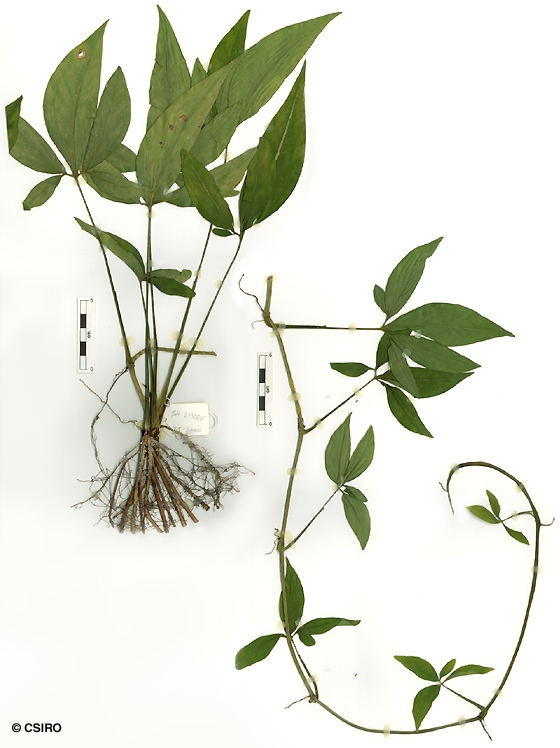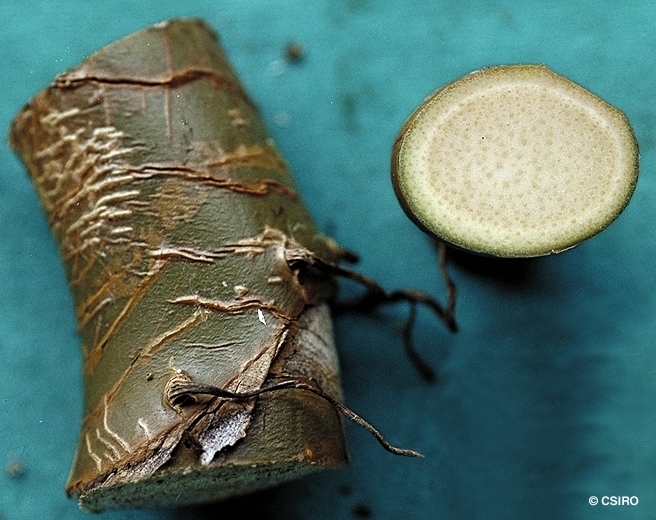Australian Tropical Rainforest Plants - Online edition
Syngonium podophyllum Schott








Schott, H.W. (1851) Bot. Zeit. 9: 85. Type: Mexico.
American Evergreen; Evergreen, American
Vine stem diameters to 3 cm recorded.
Leaves pedately compound or pedately lobed. Leaflet blades up to 30 x 11 cm, leaflet stalks usually absent. Compound leaf petioles up to 50 cm long, the winged, i.e. basal, section up to 25 cm long. Petioles produce a milky exudate when cut. Intramarginal vein usually well inside the leaflet blade margin, more so on one side than the other.
Up to 8 inflorescences produced in a leaf axil. Flowers produced in a spike, male flowers on the upper part, female flowers on the lower part of the spike. Male section of the spike about 4.5 cm long, female section about 2 cm long. Spathe enveloping the inflorescence, lower part of the spathe green, upper part cream. Spathe constricted between the two zones. Stigma capitate, finely hairy.
Fruits about 4-5 x 2-3 cm, enclosed in the lower part of the persistent spathe. Spathe pink to red, about 6-7 cm long on a stalk about 17 cm long. Seeds about 5 x 3 mm, each seed enclosed in a thin sarcotesta? The whole embryo appears to be composed of a cotyledon?
One pale sheath-like cataphyll. One leaf-like cataphyll produced before the first true leaf. First leaf triangularly cordate, small oil dots visible with a lens. At the tenth leaf stage: compound leaves mostly pedate, lateral leaflets often with one lateral lobe. Leaflets sessile, elliptic, apex acuminate. Midrib depressed on the upper surface. Two intramarginal veins visible on each leaflet, the inner one more obvious than the outer one. Compound leaf petioles winged, the wings forming a narrow sheath on the upper surface. Adventitious roots usually present at each node. Seed germination time 45 days.
An introduced species originally from central or South America, now naturalised in NEQ and CEQ. Altitudinal range quite small, from near sea level to about 50 m. Grows in lowland rain forest and gallery forest.
This plant contains crystals of calcium oxalate and is poisonous. If eaten it causes burning of the lips and mouth. (www.ces.ncsu.edu/depts/hort/consumer/poison/Syngo po.htm)





